Introduction
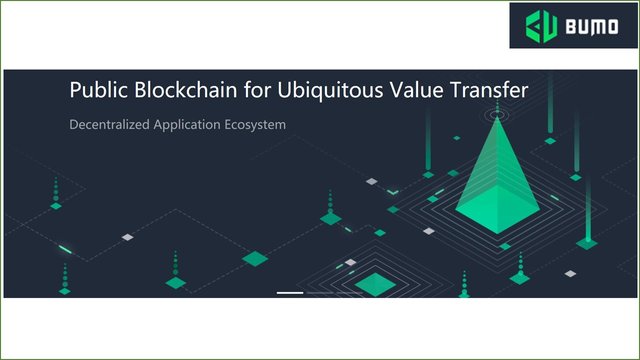
The dawn of the internet era ushered in a new wave of information access. Information dissemination underwent a paradigm shift and the world has not looked back ever since. The ease with which anyone could access the internet and leave his/her thoughts in the form of a post was unprecedented. Such a post was then easily accessible to anyone in the world to access and read. In doing so information was able to flow easily across borders and led to the creation of a seamless world. Any author from anywhere in the world could share his thoughts and there could be others with similar mindset joining up with him or her. This form of information dissemination was so effective that even Enterprises attempted to utilize this power.
With the Enterprise entering the internet realm, information essential for the functioning of the organization found safe ways of passage through the internet. So a vendor of an organization could interact with the organization through the internet for emailing, P.O. generation or Invoice generation. Thus an organization in America could interact and have supplies from China or Europe just because of the power of the internet and its ability to allow free passage of information. In effect, the Internet era brought in a free flow of information and easy adaptability.
Enterprises did not stop there, they even brought in the movement of value through the internet. From our earlier example of a vendor of an organization, we could see that the organization could settle the vendor’s invoice through the internet. In doing so, the value was transferred from the organization to the vendor. In other words, from the payer to the payee.
So, in effect, the internet allowed free flow of information and some level of value passage.
But was this enough? Maybe not.
It is easy to see that while there is a complete autonomy in information flow there is restricted flow when it comes to value. What I mean is, while anybody could go on the internet and post their thoughts or upload their picture and video (autonomy of information flow) there was a restriction on who could allow commercial exchange (autonomy of value flow). In the latter case, it would mostly be banks which acted as a central authority allowing or disallowing flow of value from the transferrer to the transferee. And therefore, it was difficult to see value flow flourishing in the internet era.
So, what’s the solution then?
The solution is Blockchain
Thankfully, the 21st century saw the introduction of the blockchain through Bitcoin in 2008. Blockchain changed the way the world saw value transfer. The inherent strengths of the blockchain like decentralized operations, trustless, immutable ledger and single version of truth made it an immediate success in areas, hitherto, not being explored. For example, a pharmaceutical blockchain could help a medicine buyer to track the medicine right up to the source and know if it was genuine or not. The immutable ledger forms the basis for such a check. Similarly, the transfer of value can happen in a decentralized and trustless manner and hence avoid the over-dependence on a single central entity to ensure value exchange. In fact, the blockchain would be the right candidate to bring about flourishing uninhibited value flow. This would be similar to what the internet did to information flow.
So, all is well then.
It is but for few challenges with the blockchain too. What are those?
The blockchain mostly uses the Proof of Work (PoW) concept for block validation. Now, the challenge is that the speed of validation is quite slow for Bitcoin or for a platform like Ethereum. Ethereum, despite its popularity, can manage only 13 transactions per second. On the real world side, “Visa” processes 56,000 transactions per second. So, blockchain is too slow. Talking more about the PoW, the energy requirement is humongous and goes on increasing as more mining happens. In other words, mining is not at all a green initiative. These and few more challenges are the ones if addressed will help in the faster adoption of blockchain solution across enterprises.
But do we have a solution which has seen the challenges of the blockchain and found a way to mitigate it?
Turns out, we do have one.

We are talking about BUMO
Before we get to know BUMO in a bit, it is pertinent to understand a couple more challenges with the blockchain. Not many solutions exist out there in the blockchain realm which attempts to connect our everyday devices or simply ensure circulation of value in industries like Finance which touches us every day. BUM0, incidentally, does that. The solution attempts to bring about the circulation of value in areas like the Internet of Things, Finance or even Social Networking in a trustless and decentralized manner. In doing so, BUMO forms an exceptional solution.
Their vision is kind of explanatory of the intention of the chain.
Create a new generation of value-circulated Ubiquitous Trust Network that allows “value” to flow freely like information.
When physical devices are connected through a blockchain back-end, we end up creating a network of the real and virtual world. Every device becomes a node and hence has a unique identity. Digitalization takes a whole new meaning and the real “Digital” push can receive a significant impetus through the BUMO blockchain. This also means that every individual whose physical device is connected can participate in the creation of the network as much as vote democratically for consensus. Such an interconnected system is what leads to “trustable value circulation”.
The concept of value circulation is better explained in BUMO’s whitepaper:
The connection between “machine” and “machine” is also a bridge between the virtual world and the real world. When such a ubiquitous trust system is established, the network’s antennae and the applications on the network will be ubiquitous. The value will flow easily in this ubiquitous trust network and the blockchain forms a credible value circulation system.
In other words, with BUMO we will see a blockchain-enabled-flourishing value circulation system similar to information circulation system which was enabled by the internet.
Now, let’s look at the BUMO solutions’ architecture.

Trustable Value Circulation System Architecture
The progress of the digital economy depends on the interconnection of digital assets (which are physical machines) able to interact autonomously. Considering just the financial example of about USD trillions worth of trade happening every day, imagine the time that could be saved if machines could interact and trade or transfer value autonomously. The world would be more effective than it is today.
BUMO attempts to work towards such a world and the underlying architecture is as shown below:
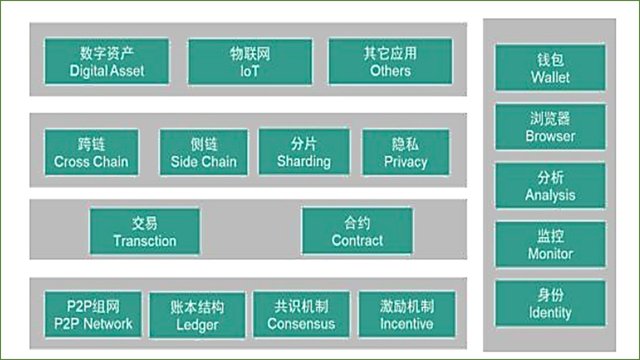
The architecture is robust and the main constituents can be explained as follows:
- The underlying layer is the one which makes the blockchain function and these include, P2P networking, ledger structure, consensus mechanism, incentive mechanism, etc. These are the ones which lay the foundation for the functioning of the chain. The foundation allows the operation of the nodes to interconnect through the P2P networking and provide details of the book structure and storage of book data. The consensus mechanism brings about consistency of underlying data and disallows attacks. While the incentive mechanism, as the name indicates, promotes participation of the nodes
- The next layer is the Smart Contract enabled transaction layer which allows automatic execution of contracts based on preset conditions. The smart contracts can be programmed in various known programmable languages
- The next layer is the chain functioning layer which governs the functioning of the main chain, side chain, cross chain, etc. This layer promotes the reusing of the chain and innovation, thereby expanding the operation and supporting multiple asset types
- The topmost layer or the user interface layers is where the users and physical assets interact with the blockchain. Here is where the real world meets the virtual world. Needless to say, this is where the interaction and transactions are initiated. So, operations like trading, acquisition of services, revenue transfers, digital asset creation, etc. are done here. Also, the expected computing power, trust acquisition, and transfer too happen in this layer
- The last of the layer is the peripheral layer which includes wallet, monitoring mechanism, identity authentication interface (login), etc. where an individual or asset initiates, monitors and stores value from the functioning of the entire BUMO chain.

Among so many public chains, what are the key differences of BUMO?
BUMO learns from the public chains operating today and hence attempts to alleviate the known pitfalls. The same is enumerated below:
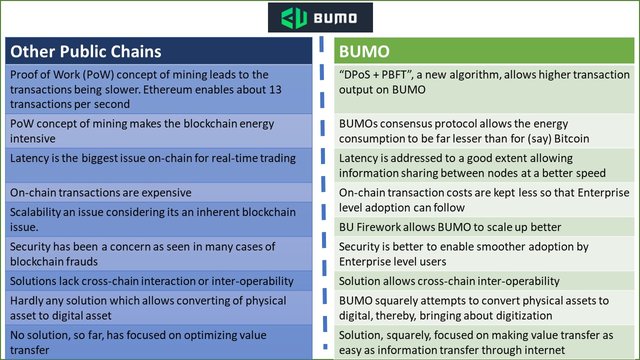

Consensus (PoW, PoS, etc) is always a bottleneck for the transaction speed of a blockchain, how does BUMO solve it?
The blockchain world led by Bitcoin followed the “Proof of Work” concept for block signing and allowing the user to then collect the coins/tokens. However, what was not envisaged at that point was how much it would hurt transaction speed. Not only that but the trivial or non-trivial task to be completed to claim stake led to a kind of competition between computers and therefore, the increase in energy consumption. This method, therefore, had to be left alone and a focus was to be created to find lesser power consuming and more effective modes of block signing.
BUMO does exactly that. It uses a new algorithm called “DPoS + PBFT” which is different from the traditional Proof of Stake (PoS) or PBFT (Practical Byzantine Fault Tolerance). Here instead of computers competing for blocks, a group of Validator nodes reach consensus through asynchronous BFT algorithm for block validation. The BFT algorithm takes into consideration the weight of the Validator and higher the weight higher the chances of getting the block. This, therefore, leads to faster transaction signing and best of all, lesser energy consumption.

For some large enterprises who have scalability, security and performance concerns about implementing blockchain, how does BUMO help?
At the beginning of this article we saw that the current validation and consensus method used by the well-known blockchain restricts the transaction speed, scalability, and security of the platform. To bring about perspective, Ethereum can enable transactions to the tune of 13 transactions per second and at that speed, the functioning of an Enterprise will all but come to a halt.
That said, there is still interest in blockchain and its inherent strengths. As per IDC Forecast report, by 2021 at least 25% of top 2000 companies globally will use blockchain solutions. The adoption will be across industries ranging from Banking, Manufacturing & Retail to Healthcare. However, if the scalability and performance issues remain then chances are that these industries will defer the adoption indefinitely if not, losing faith completely.
BUMO, attempts to solve this problem and in fact, presents itself as a candidate for enabling Enterprise level solutions. The “DPoS + PBFT” algorithm of consensus and validation makes the chain that much faster, secure and reaching performance close to real-world operations. In doing so, BUMO also presents itself as a solution which can allow "machine to machine" operations to run autonomously and therefore, helping the organization to redeploy the human workforce for faster growth. The interaction between digital assets can be managed through BUMO smart contracts. Smart contracts by nature of operation can execute in a time-bound manner and stop as also there is certainty in their operation. The BUMO smart contract along with the BUMO Virtual Machine (BuVM) is shown below.
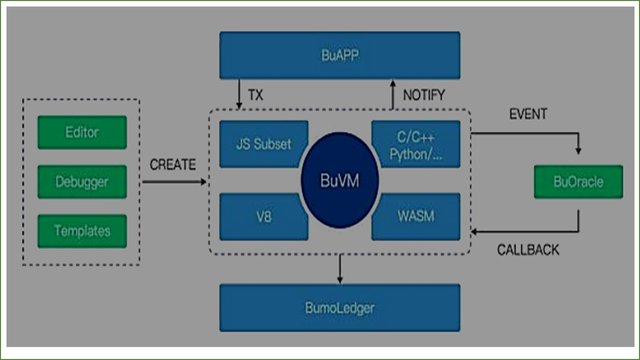
Here too BUMO has ensured that the adoption of the Smart Contracts by programmers is made easy. So, the programming can happen in Java, one of the most widely known and accepted programming language, along with other languages. As such, Enterprises need not hunt for people with special skills for blockchain programming but their own available resources can be utilized.
These are some aspects which will help BUMO’s adoption as a robust and user friendly blockchain solution by Enterprises.

Why is a secure transfer of value so important? In a digital world, how important is the security and speed of data?
In a world interconnected by the internet the transfer of information happens almost at a blinding pace. For example, a “WhatsApp” user is assured of real-time chat with a person sitting halfway across the world. This also means that users of today’s internet-based interaction will be used to the current pace at which the information transfers happen. In such a scenario, the expectation from the blockchain world will be to match or better this speed. In Enterprise context, commercial transactions are happening in nanoseconds. We did discuss that VISA caters to 56,000 transactions per second and hence the speed of transaction is very important in the digital world. Also, since transactions with value means that loss in transmission or through hacking would lead to one or both parties losing money. This means that storage as much as transmission should be secure for users to trust a solution.
BUMO having identified these aspects ensures that the blockchain is secure enough for users to trust its blockchain. In fact, blockchain presents a better level of security than the internet, and BUMO betters even the traditional blockchain solutions in ensuring security. Its design ensures security in the creation of the block itself. The common occurrence of “Nothing-At-Stake” attack or “Long-Range-Attack” of validators is effectively nullified by BUMO’s algorithm. For example, the Validator node if proved to be malicious is removed from the Validator node and its deposit is forfeited. This prevents Validators from attempting such an attack. Even the Long-Range attacks are handled by ensuring validator nodes’ redemption enter a deposit freeze. And if a malicious act is proved, the deposit is disallowed to be withdrawn, and the node is removed. These aspects bring security to the blockchain, while the BU Firework algorithm (which we saw earlier in the article) allows a better speed of transactions.

Since BUMO is not restricted to powerhouse computers to run nodes, how will this help mass adoption?
The major advantage of BUMO is moving away from the Proof of Stake kind of validation. This allows few nodes, denoted as Validator nodes, to do the job of validation. Besides, this makes the chain simpler, leaner and faster. In addition, the BUMO chain considers each device connected to the network as a node, it means that even a smartphone can become a node. Therefore such nodes can participate in the network and in fact, they are the ones that make up the network.
Finally, BUMO enables the adoption of the chain by providing DApps. This would allow solution providers to customize their front end to make it easier for customers to use. As such, both the factors – allowing any device to become a node and DApps – allow mass adoption across ranks.

Let’s sum up the key features of BUMO
Having seen BUMO so far it is only fair to summarize the features of the chain. Here we go.
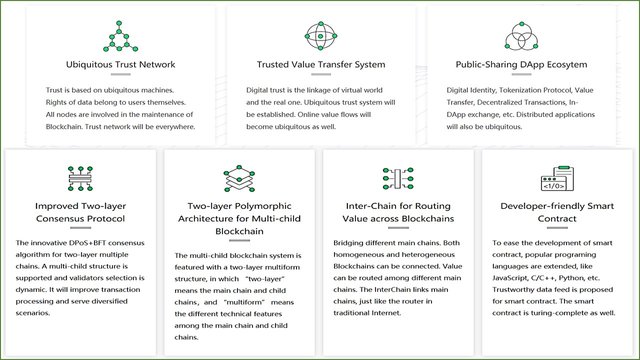

A bit about the Tokens
BU token is the native token of the BUMO economy. The token, much like any native token, can be used for transactions, settlement and smart contract fulfillment. Ownership of the BU tokens also allows participants to form part of the governance structure.
More about the Token split is given below:
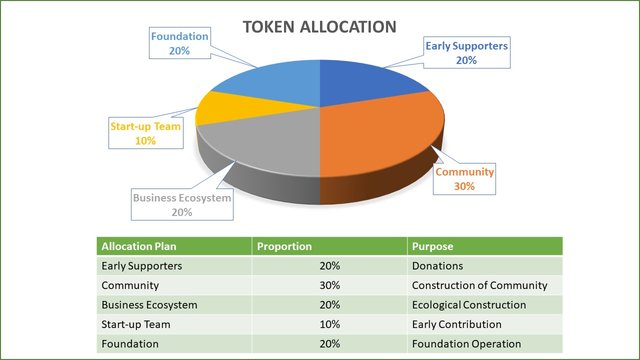

Use Cases
Case 1: Online Gaming Assets
Stephen is an online game lover. He plays different varieties of games on the blockchain and few off-blockchain games too. He is proficient in winning games and therefore, has numerous gaming assets across different games. He doesn’t mind trading assets which he has in excess to those who would want to have them. But he faces few challenges. Trading of assets between games does not have a ready solution. It has to happen through the internet with an unknown person and there exists the risk of him being cheated. Although he knows few players who are common across games, he cannot trade assets of another game with them.
Stephen comes to know of BUMO blockchain and is instantly happy about the possibility of his ability to digitize his assets (in this case the asset is already digitized) and transact that with another player through a smart contract. Interestingly, Stephen is able to trade his assets for USD, other cryptocurrencies, and even other assets. This helps him to realize a new value for his gaming assets and is able to deal with more and more players.
The best part is that not only Stephen continues to enjoy playing but now he has a new incentive to trade his assets for real-life money. So, he makes money doing what he loves to do!
-----------------------------------------------******--------------------------------------------------
Case 2: Collectors’ Corner
Jim likes coin collection and has an enviable collection of coins from across countries and time. There are few coins in his collection which are more than one and Jim is fine with trading them. However, Jim is not sure how to go about it and further he is worried that he should not be ending up being cheated while trying to sell his coins.
Jim hears about the BUMO network and sees its potential in helping him liquidate his assets. As the first step, he digitizes his assets and then finds a community of like-minded coin collectors. Through them, he is safely able to sell his coins to interested buyers by deploying intelligent smart contracts. Jim is happy about the entire thing. However, there is one more advantage that Jim did not realize before. He is now able to find rare coins too and buy it. This wouldn’t have been possible had he attempted to sell the coins on his own in the real world. This combination of the real and virtual world ensures that Jim stays happy, is able to sell when he wants, and more importantly, buy when he finds a rare coin!

Now, let’s look at the Team behind BUMO
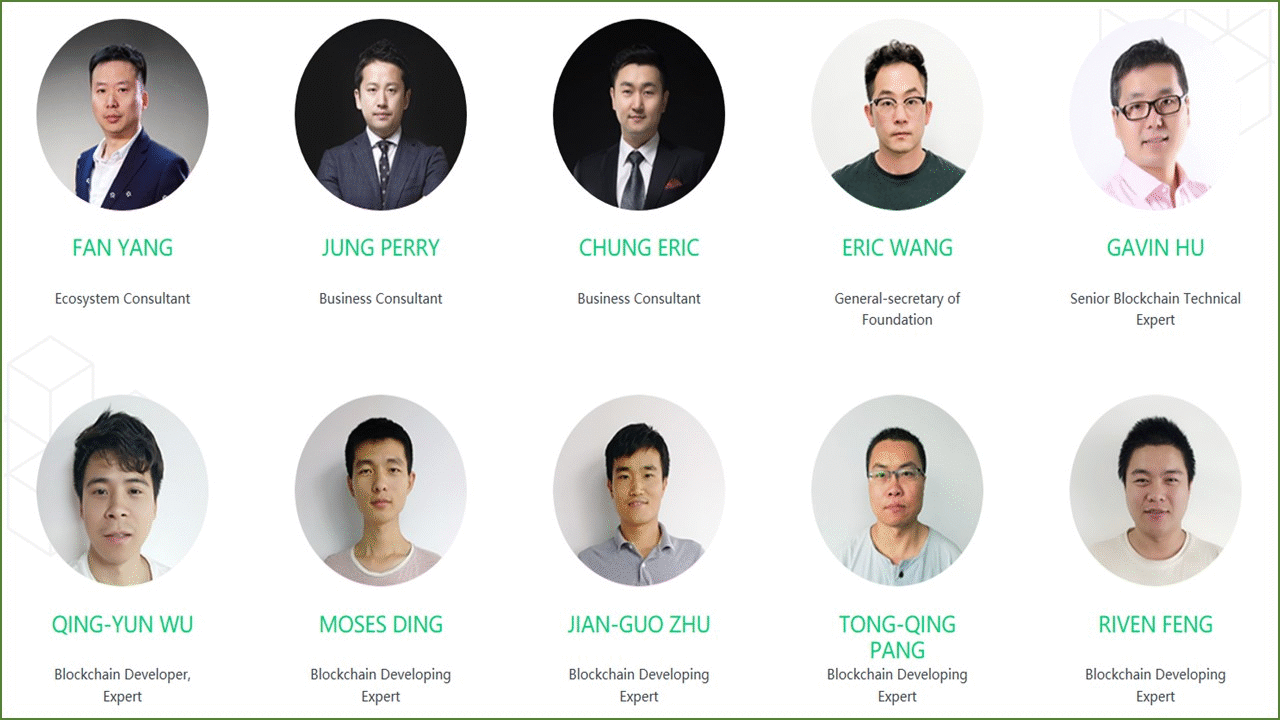

Global Community, Investors and Partners
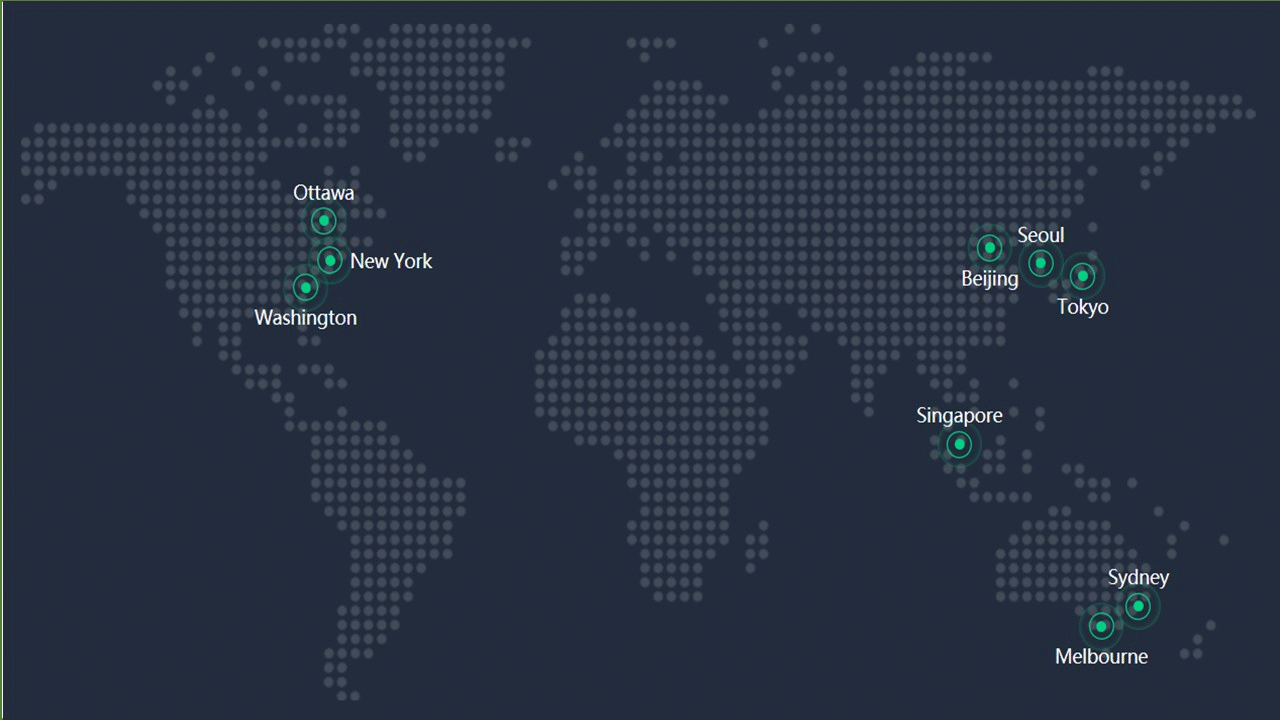

Summary
BUMO takes blockchain solution to a different level. To achieve free value circulation is a gargantuan task but the success will easily catapult the world economy to a different level. As we discuss, it is easy to visualize more than a hundred scenarios where BUMO can work and that is still just the tip of the iceberg.
BUMO achieves more than just value circulation. In fact, asset digitization, inter-chain operability, accessibility through DApps and others are few of the innovativeness of the solution. BUMO appears to be definitely set to achieve value circulation through the blockchain world, and thereby, catapult the world to its next revolution!

Here’s my Twitter Link:
https://twitter.com/DawsonSavio/status/1052486558383779840
-----------------------------------------------******--------------------------------------------------
It is also recommended that readers understand more about BUMO through any of the following informative resources.
- BUMO Website
- BUMO WhitePaper
- BUMO TechnicalPaper
- BUMO Telegram
- BUMO Weibo
- BUMO Reddit
- BUMO Facebook
- BUMO Twitter
- BUMO Github
- BUMO Wallet
-----------------------------------------------******--------------------------------------------------
This article is written in response to originalworks’ call on authors’ thoughts on BUMO. It can be read here.
Image Courtesy: Pixabay and BUMO Resources
bumotwitter
bumo2018
This post has been submitted for the @OriginalWorks Sponsored Writing Contest!
There is also a bonus CateredContent Event to earn additional Steem!
You can also follow @contestbot to be notified of future contests!
Downvoting a post can decrease pending rewards and make it less visible. Common reasons:
Submit
Congratulations @oivas! You have completed the following achievement on the Steem blockchain and have been rewarded with new badge(s) :
Click on the badge to view your Board of Honor.
If you no longer want to receive notifications, reply to this comment with the word
STOPDo not miss the last post from @steemitboard:
Downvoting a post can decrease pending rewards and make it less visible. Common reasons:
Submit